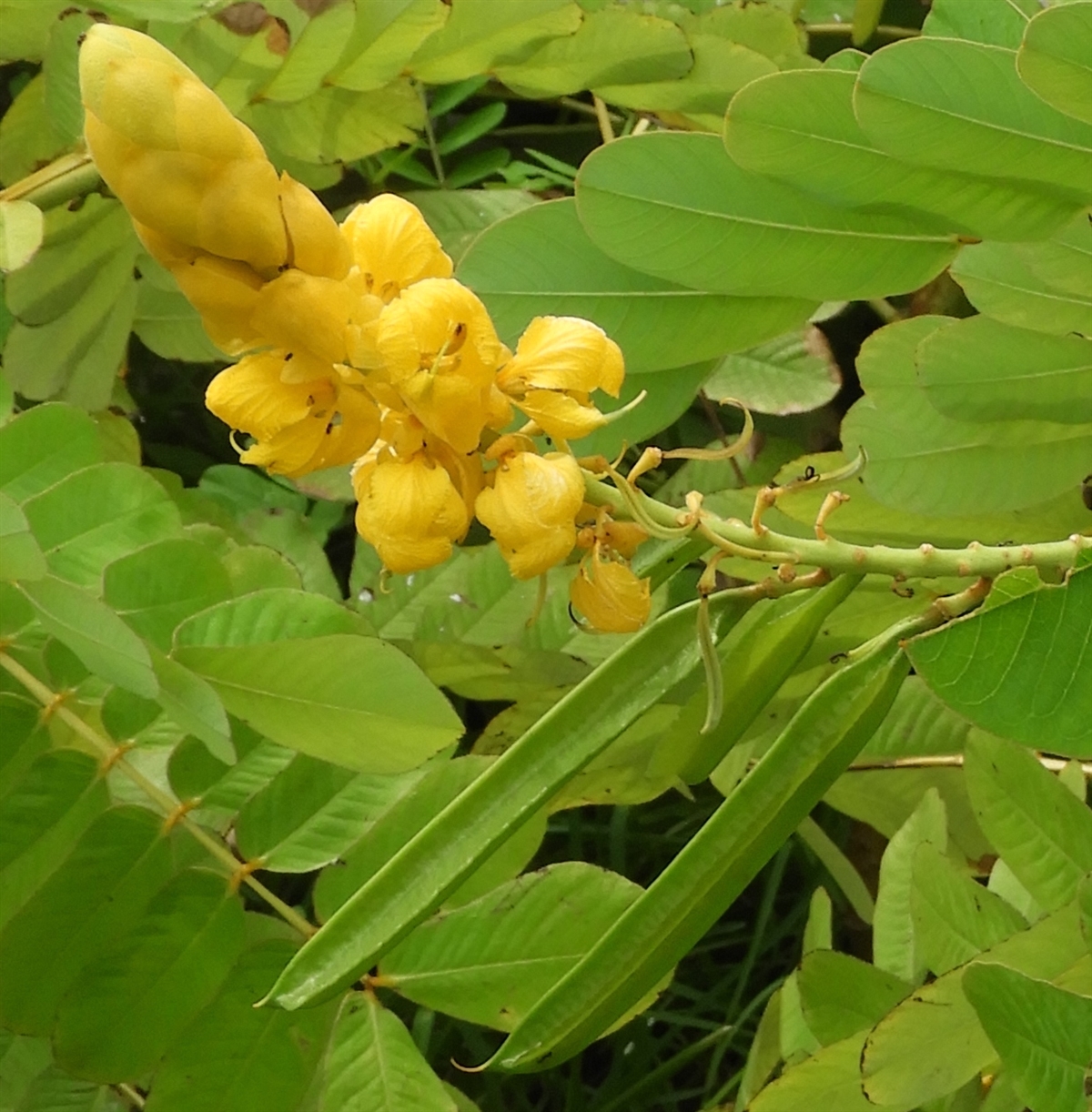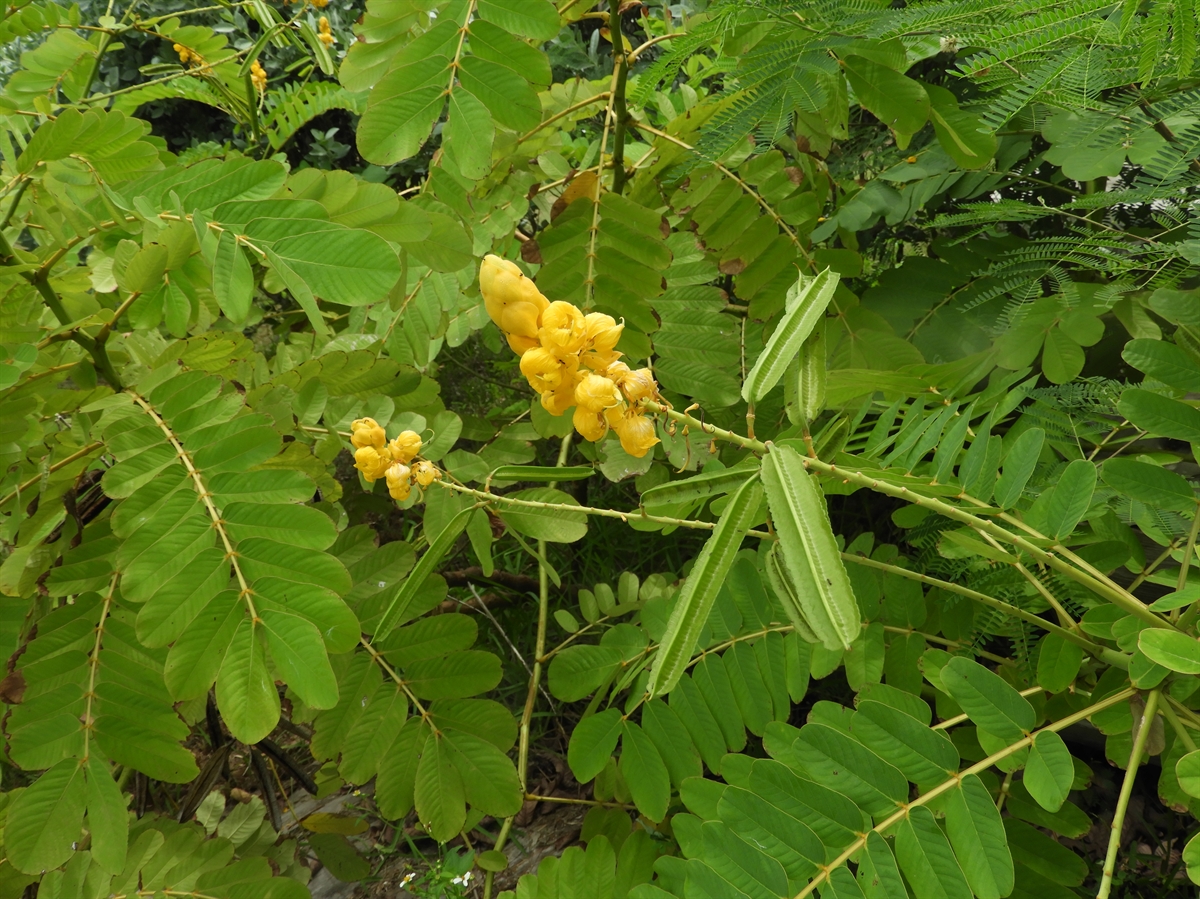Habit: Senna alata grows as a shrub to 3 m in height. The evenly pinnately compound leaves are arranged oppositely, to 35 cm in length with lanceolate stipules. The leaflets are in 6-12 pairs, each 10-15 cm in length, oblong to obovate, with an obtuse to rounded leaf apex, an entire margin, and an asymmetric base. There is no gland on the petiole.
The complete, perfect, zygomorphic flowers are arranged in tight, axillary racemes. With each flower subtended by a bract. The calyx has 5, yellow, unfused, oblong sepals. The corolla has 5, bright yellow, unfused petals, none of which form a keel. There are 10 stamens of which only 7 are fertile. The ovary is superior and forms a thickened, winged, brown, legume at maturity.
Habitat: Senna alata grows in Human Altered environments (yards, gardens, roadsides).
Distribution: Senna alata is NOT native to the Lucayan Archipelago but occurs on many of the island groupings. It occurs throughout the general Caribbean region and Central and South America. It now occurs pantropical and subtropical.
Medicinal/Cultural/Economic usage: Senna alata is not known to be used in the Lucayan Archipelago. It is used in the ornamental industry for its showy inflorescences.
In other regions of the Caribbean it has been used to treat dermatological issues and pulp from the fruit has been used as a laxative. The seeds however are highly poisonous and care must be taken while extracting the pulp.

